The Z Car — A 45-year journey in North America
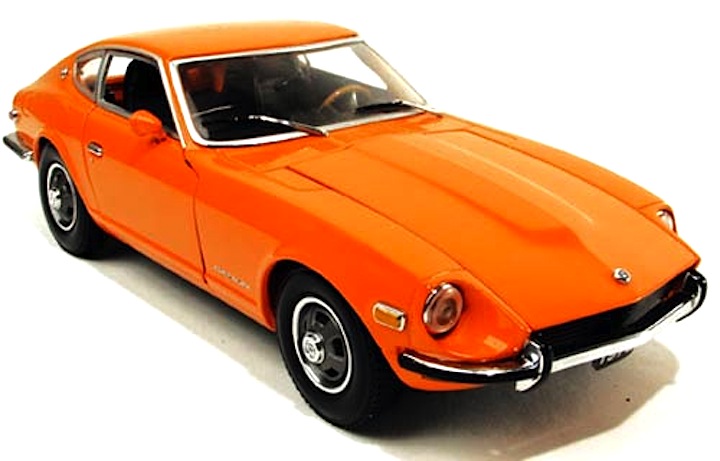
(May 22, 2014) The journey from the original 240Z to the current 370Z made a number of interesting stops along the past 45 years. Interestingly, the 240Z might not have made the journey to America in the first place, if not for the efforts of one man.
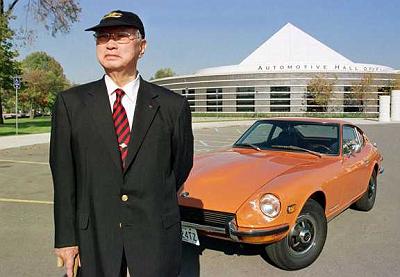 Though many people were responsible for the design and engineering of the first generation 240Z, its success in North America can be attributed to Yutaka Katayama, pictured at right, who was president of Nissan’s U.S. operations at the time. Known affectionately as “Mr. K,” he was convinced that the company’s new sports car design would be a hit in the U.S. There was just one problem — the vehicle’s name: the Fairlady Z (which is still used in the Japanese market today).
Though many people were responsible for the design and engineering of the first generation 240Z, its success in North America can be attributed to Yutaka Katayama, pictured at right, who was president of Nissan’s U.S. operations at the time. Known affectionately as “Mr. K,” he was convinced that the company’s new sports car design would be a hit in the U.S. There was just one problem — the vehicle’s name: the Fairlady Z (which is still used in the Japanese market today).
With a name change for this market to “240Z” and some aggressive marketing, including early motorsports success, the Z became an instant hit bringing attention and buyers not just to Z, but also to the entire brand.
When the original Datsun 240Z debuted as a 1970 model, pictured above, its design and performance were considered state-of-the-art: a 150-horsepower 2.4-liter single overhead cam inline 6-cylinder engine, 4-wheel independent suspension, 14-inch wheels, choice of a 4-speed manual or 3-speed automatic transmission, and a quarter-mile acceleration time of 17.1 seconds at 84.5 miles per hour. The 240Z was conceived as a closed coupe body, rather than the typical open-top sports cars of the age, to enhance body rigidity and, therefore, improve handling and durability.
After overseeing Nissan’s growth in the U.S. in the ‘70s, Katayama returned to Japan and remains, to this day, linked to the Z’s success here and around the world. On Sept. 15th, 2009, Mr. K celebrated his 100th birthday and received cards and birthday greetings from Z lovers everywhere.
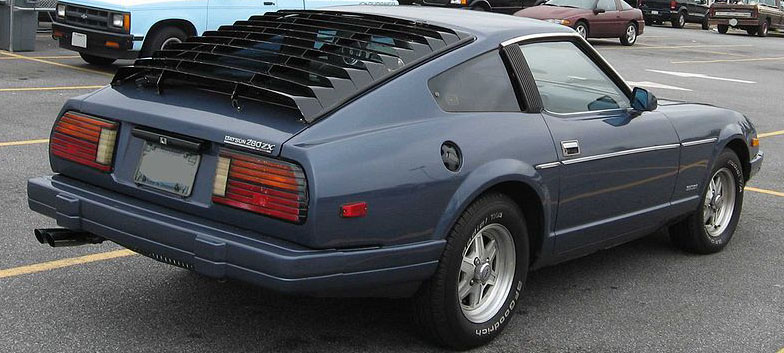 In 1974, as the engine displacement climbed to 2.6 liters the name changed to 260Z. The 2+2 model with an extended roofline and tiny back seat also appeared. In 1975, engine size increased again to 2.8 liters with fuel injection and the name changed to 280Z. Z cars continued to dominate on the racetrack, with Pete Brock, John Morton, Bob Sharp and Paul Newman among the many talented drivers.
In 1974, as the engine displacement climbed to 2.6 liters the name changed to 260Z. The 2+2 model with an extended roofline and tiny back seat also appeared. In 1975, engine size increased again to 2.8 liters with fuel injection and the name changed to 280Z. Z cars continued to dominate on the racetrack, with Pete Brock, John Morton, Bob Sharp and Paul Newman among the many talented drivers.
Z sales continued to climb with the introduction in 1979 of the new second generation 280ZX, pictured above. Now priced at just under $10,000, the 280ZX was named Motor Trend “Import Car of the Year” and sales passed 86,000 units. T-tops and a turbocharged engine followed in the early ‘80s.
In 1984, Z engine displacement increased again, with a 3.0-liter V6 replacing the classic Z inline-6, and the 300ZX was born. Also, a specially equipped model celebrating the company’s 50th anniversary and priced at $25,999 was introduced. The 1984 Z was the best selling sports car in America.
The next breakthrough in Z history came in 1990 with the arrival of the totally redesigned, fourth generation 300ZX. Offered in two-seat and four-seat 2+2 models, it offered an unheard of 222 horsepower and a top speed of 150 mph. A few months later, the 300ZX Turbo followed – with 300 horsepower, a 160-mph top speed and a $33,000 price tag.
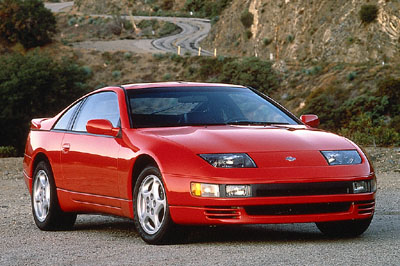 The 1990 300ZX captured the Z’s second Motor Trend “Import Car of the Year” award, along with a spot on Car and Driver and Road & Track “10 Best” lists. The 300ZX, pictured at right, also captured Automobile’s “Design of the Year” and the first of four “All-Stars” awards.
The 1990 300ZX captured the Z’s second Motor Trend “Import Car of the Year” award, along with a spot on Car and Driver and Road & Track “10 Best” lists. The 300ZX, pictured at right, also captured Automobile’s “Design of the Year” and the first of four “All-Stars” awards.
By the mid-‘90s, however, sports car sales in general were slowing and the Z had lost its “affordable” sports car positioning. With Z sales declining sharply and the core “value” positioning no longer part of the “Z DNA,” sales of the Z in the U.S. slumped and sales were stopped following the 1996 model year. The last 300ZX imported into the U.S. was inducted into the Petersen Automotive Museum in Los Angeles.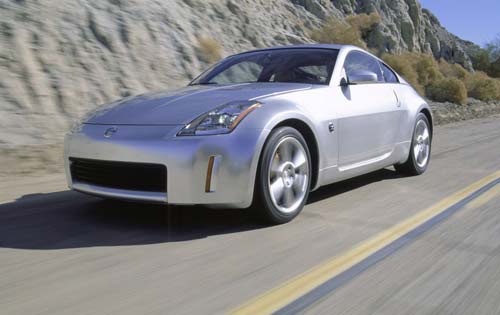
The next chapter of the Z history came just before the end of the century. In 1999, Nissan and Renault formed what has become the highly successful Renault-Nissan Alliance.
Carlos Ghosn was assigned by Renault to head the new management team. Among his first tasks was not just to look at the business aspects, but to find the “soul” of the company. In interview after interview, people inside and outside the company brought up one model to him, one letter: Z.
Development of the new Z began later that year, with the return to the values of the original 240Z – a car that sports car enthusiasts would look forward to driving everyday; quick, inspiring and affordable.
In summer 2002, the Z was reborn with the introduction of the 2003 350Z. It was delivered, as promised, with an MSRP of under $30,000.
Following the 350Z’s unprecedented success, the sixth generation Z, the 2009 370Z was launched in December 2008. Now the little sports car that could comes full circle with the announcement of the 370Z 40th Anniversary Edition.
In May 2014, a 2015 370Z NISMO special edition was unvieled at Fontana Dam, N.C. The 370Z NISMO has been extensively revised for the 2015 model year. It features exterior and performance refinements, an interior with Recaro sport seats, a 7-speed automatic transmission option and a new 370Z NISMO Tech grade.
What's under the hood? A potent 350-horsepower, 3.7-liter double-overhead-cam V6 engine with Variable Valve Event and Lift Control. That engine is matched with an exclusive, tuned, H-configured exhaust system design, muffler tuning and optimized Engine Control Module calibration. That creates 18 more horsepower than a standard 370Z Coupe.
